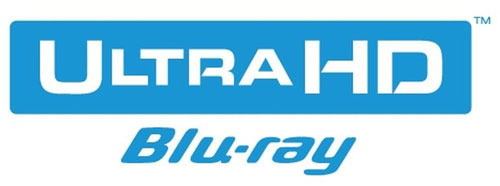HDTVTest had the opportunity to meet with the Blu-ray Disc Association earlier this month at the 2018 International CES, and spoke with its chair Victor Matsuda. Matsuda says that as the format grows, its success has come as a “pleasant surprise” to the industry.

Identifying a key opportunity ahead, the BDA, citing market research from FutureSource, notes that while awareness of Ultra HD “4K” resolution is high in major markets – 75% of Americans had heard of the feature – awareness of High Dynamic Range (HDR) technology is considerably lower, at just 44%. To that end, the BDA has released explanatory videos on media outlets such as its YouTube channel and its web site with the aim of educating consumers in an attempt to redress the balance.
From HDTVTest‘s perspective, the most potentially exciting news is that the Ultra HD Blu-ray specification has received an update to accomodate the new HDR10+ standard. HDR10+ was originally developed by Samsung, but is now gaining broader industry support. In brief, HDR10+ gives content creators and hardware manufacturers a cheaper, royalty-free method for adding dynamic (rather than static) metadata to their HDR video, allowing for improved brightness rendering across a wider range of HDR TVs. Dolby Vision has supported dynamic metadata from the outset, although that system entails a higher cost from a content creation and licensing perspective. Now, content providers have another way to include dynamic metadata in their UHD Blu-ray titles.
It will be interesting to see how this ultimately plays out – we’d ideally end up with a future situation where support for all major HDR systems is a standard “check-box” feature in displays and players, although given that HDR10+ was spearheaded by Samsung presumably for cost reasons, that may be wishful thinking. Regardless, the good news is that thanks to the design of the UHD Blu-ray format, all HDR discs – be they HDR10, Dolby Vision, or HDR10+ – will produce an HDR picture when played on a UHD Blu-ray player thanks to the mandatory HDR10 base layer.
There’s another HDR format that you’ve probably not heard of. Previously known as “Philips HDR”, it’s now a joint project between Philips and Technicolor, and has been renamed to SL-HDR2. The goal of this system is to produce a single video stream that can be displayed as either SDR or HDR. UHD BD supports the latest updates to this standard, although we’re intrigued as to its future prospects given that it has very little consumer awareness.
According to the BDA, player sales are up 133% in 2017. The range of UHD BD products is also diversifying: in the early days, manufacturers would typically have only one UHD BD player, whereas many are now announcing an entire range at different price points.
Matsuda pointed out that at the end of 2016, the UHD Blu-ray format had amassed around 110 titles – more than initially expected. By the end of 2017, he counts approximately 250 available to consumers. “To have that many titles out in the first two years is amazing,” said Matsuda. Also noteworthy is the number of older films being reissued on the format, which he cites as an example of its continuing success (it’s one thing to convince consumers to buy a new-release blockbuster in the format, but the continued issuing of catalogue titles suggests that enough consumers see a benefit in rebuying titles they may already own in an older format).
Both Christopher Nolan, famous for his insistence on filmic image quality, and James Gunn, director of the Guardians of the Galaxy movies, have independently expressed their view that fans should watch their films on Ultra HD Blu-ray for the best viewing experience. Nolan, for one, had the UHD Blu-ray version of Dunkirk sent to Academy members so they could experience the film at its best when considering their upcoming Oscars voting.
On the subject of Guardians, Matsuda notes that the Walt Disney studios were the seventh and last of the Hollywood majors to get on board with the Ultra HD BD format. The latest Pirates of the Caribbean instalment, plus Pixar creations Cars 3 and the upcoming Coco have followed suit.
It seemed that, as soon as Blu-ray defeated HD DVD in the (frankly, regrettable) format war in 2008, discussion quickly refocused on whether the packaged media format could hold its own as network delivery of video content gained momentum. Ten years later, there still appears to be a future for the optical disc. The BDA cites lagging broadband speeds in most key markets as a window of opportunity for Ultra HD Blu-ray. For example, Netflix recommends a download speed of 25 megabits per second to stream Ultra HD content, but only 21% of users in the US (and even less in Western European markets) have access to such bandwidth at the best of times – these numbers don’t take into account network congestion from large numbers of users attempting to access content at the same time.
As an aside, depending on the type of disc used, the UHD Blu-ray format supports data rates of up to 128 megabits per second, which should result in almost no picture quality compromise compared to heavily compressed broadband delivery.
Other updates to the format include a Japan-only recordable UHD BD standard, which interestingly will even support recording 8K video from NHK’s satellite broadcasts (although we should clarify that this support is for the Japanese home recording format only – don’t expect to start seeing 8K pre-recorded movie releases).
Disclaimer: David Mackenzie, the author of this article, encodes and authors films to Blu-ray for various publishers.